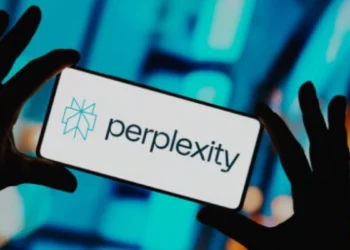Google presented Willow, a next-generation chip, marking a crucial breakthrough in quantum computing. In just five minutes, this revolutionary chip—which was created at the company’s quantum lab in Santa Barbara, California—solved a challenging mathematical problem that would have taken traditional computers an eternity.
“In less than five minutes, Willow completed a standard benchmark computation that would have taken a modern supercomputer 10 septillion (or 1025) years—a figure that greatly surpasses the age of the universe,” Google stated in a blog post.
Google, like other industry giants like Microsoft, wants to transform computing by reaching speeds that are significantly faster than those of existing systems. Although Google’s chip doesn’t currently have a commercial use, the company sees quantum computers solving problems in artificial intelligence, medicine, and battery technology that are beyond the capabilities of current devices.
Also Read: Genie 2 from Google DeepMind can Create Interactive 3D Environments
For those who are unaware, a quantum chip is a unique kind of computer chip that makes use of the concepts of quantum mechanics, which is the study of minuscule objects like atoms. Quantum chips process information using “qubits,” which can be 0, 1, or both simultaneously, as opposed to ordinary chips, which employ “bits” (0 or 1). Because of this special capability, quantum chips can do intricate computations far more quickly than conventional computers.
Google Willow quantum chip: what is it?
The Willow chip, which has 105 qubits—the basic building blocks of quantum computation—is at the core of Google’s innovation. Although qubits are faster than regular bits by nature, they are also more prone to errors brought on by minute disruptions like subatomic particles. Due to their tendency to worsen performance as the number of qubits on a semiconductor increases, these mistakes have been a major challenge.
Willow’s performance is astounding: according to Google, it finished a work that would have taken ten septillion years for even the greatest supercomputers to complete in less than five minutes. That is ten million,000,000,000,000,000,000 years, which is a lot longer than the universe’s age. This astounding outcome is consistent with David Deutsch’s multiverse theory, which holds that quantum computing functions across numerous parallel worlds.
Google claims that it was able to lower mistake rates as the number of qubits increased by carefully connecting Willow’s qubits. Furthermore, Google asserts that it can now instantly fix mistakes, which is a crucial step in enabling quantum devices to be used in the real world.
Also Read: Google.org Invests $20 Million in Scientists Utilizing AI to Advance Science
The discovery
Google places a higher priority on qubit stability, even if some rivals are creating circuits with more qubits. The principal architect of Google Quantum AI, Anthony Megrant, claims that this strategy guarantees steady advancement. In order to facilitate quicker development cycles, the company also made an investment in a fabrication plant specifically designed for Willow.
To speed up learning, Megrant stated, “If we have a good idea, we want someone on the team to get it into the clean room and into one of these cryostats as fast as possible.”
There is intense competition for this milestone. IBM criticized Google in 2019 for claiming that a task that would take 10,000 years for traditional computers to solve had been solved by an earlier quantum device. IBM claimed that using optimized classical methods, the operation could be completed in just two and a half days. In response to these worries, Google said on Monday that even in the best of circumstances, it would take a billion years for a traditional computer to achieve the same performance as the newest processor.
Also Read: Google Released “Learn About” Experimental AI Tool Featuring Responses in an Educational Style
According to Hartmut Neven, completing a “useful, beyond-classical” calculation that is feasible with current quantum chips and has practical uses is the next significant step for quantum computing. “We’re hopeful that the Willow chip generation will enable us to accomplish this. Two different kinds of experiments have been conducted thus far. We have used the RCS benchmark, which compares performance to traditional computers but has no known practical uses.
However, we have conducted scientifically intriguing simulations of quantum systems that are still accessible by classical computers and have produced new scientific findings. Our objective is to simultaneously enter the field of algorithms that are practical for real-world, economically significant problems and that are outside the capabilities of traditional computers,” he stated.


















